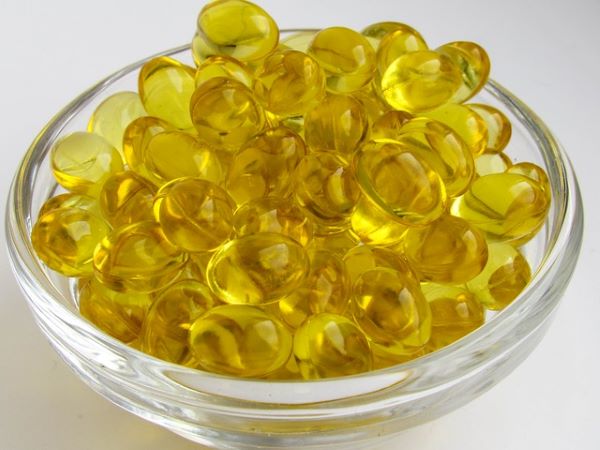The rainy season often brings gloomy weather, limiting our exposure to natural sunlight, which is a primary source of vitamin D. Adequate levels of vitamin D are crucial for maintaining overall health, supporting immune function, and promoting bone health. Fortunately, there are several strategies to ensure you get sufficient vitamin D, even during the rainy season. In this article, we will explore effective and practical ways to maximize daily Vitamin D intake in monsoons.
Maximize Sunlight Exposure:
Take advantage of breaks in the rain and cloudy weather to get outside and expose your skin to sunlight. Research has shown that even brief periods of sun exposure can significantly impact vitamin D synthesis in the body [1]. Aim for at least 15 to 30 minutes of direct sunlight on your face, arms, and legs. During this time, avoid wearing sunscreen, as it can hinder vitamin D production. However, be mindful of sunburn and overexposure. Note that the strength of sunlight varies by geographical location, so adjust your exposure accordingly.
Boost Vitamin D: Embrace Indoor Light Therapy
In regions with limited sunlight during the rainy season, light therapy can be an effective alternative for obtaining vitamin D. A study published in the Journal of Investigative Dermatology found that exposure to artificial ultraviolet B (UVB) light significantly increased vitamin D levels in participants [2]. Invest in a light therapy lamp or lightbox designed to mimic natural sunlight. Sit near the light source for approximately 15 to 30 minutes each day, following the manufacturer’s instructions.
Also Read: 10 Ways How Air Conditioners Impact Your Health Negatively
Consume Vitamin D-Rich Foods:
Supplement your vitamin D intake by incorporating foods naturally rich in this nutrient. Fatty fish, such as salmon, mackerel, and sardines, are excellent sources of vitamin D. A study published in the International Journal of Food Sciences and Nutrition demonstrated that regular consumption of fatty fish increased vitamin D levels in participants [3]. Additionally, fortified foods like dairy products, cereals, and plant-based milk alternatives provide added vitamin D. Including these foods in your diet can contribute to maintaining sufficient vitamin D levels.
Consider Vitamin D Supplements:
In cases where sunlight exposure and dietary sources are inadequate, vitamin D supplementation may be necessary. According to a review published in the Journal of the American Medical Association, vitamin D supplementation can effectively raise and maintain vitamin D levels [4]. Consult with a healthcare professional to determine the appropriate dosage and duration of supplementation based on your individual needs. They can also conduct blood tests to assess your vitamin D levels accurately.

Optimize Indoor Activities:
Since outdoor activities may be restricted due to rain, engage in indoor pursuits that still allow exposure to natural light. Open curtains or blinds to maximize daylight in your living spaces. A study published in the journal PLOS ONE found that individuals exposed to more natural light indoors had higher vitamin D levels compared to those with limited exposure [5]. Position yourself near windows or in well-lit areas while working, reading, or pursuing hobbies. This way, you maximize daily Vitamin D intake in monsoons even indoors.
Also Read: 10 Breathing Exercises For a Healthy Body & Stress-Free Mind
Plan Vitamin D-Rich Meals:
Create meals that incorporate foods naturally high in vitamin D. Recipes featuring salmon, tuna, mushrooms (exposed to sunlight), fortified cereals, or omelets with egg yolks can boost your vitamin D intake. A study published in the American Journal of Clinical Nutrition demonstrated that regular consumption of vitamin D-rich foods positively influenced vitamin D levels in participants [6]. Meal planning ensures you consume a diverse range of vitamin D sources throughout the rainy season.
Also Read: Everything You Wanted To Know About Vitamin D!!!
Maximize Daily Vitamin D Intake in Monsoons End Note:
Obtaining sufficient vitamin D during the rainy season is essential for maintaining optimal health and well-being. By maximizing sunlight exposure, embracing indoor light therapy, consuming vitamin D-rich foods, considering supplementation, optimizing indoor activities, and planning nutritious meals, you can support your vitamin D levels and overall vitality. Remember to consult with a healthcare professional for personalized advice and guidance based on your specific needs. Embrace these strategies, backed by scientific evidence, to ensure you receive adequate vitamin D, even when the rain tries to dampen your sunshine.
(Note: The information provided in this article is for educational purposes only and should not substitute medical advice. Consult a healthcare professional for personalized guidance and recommendations.)
References:
- Holick MF. Sunlight and vitamin D for bone health and prevention of autoimmune diseases, cancers, and cardiovascular disease. Am J Clin Nutr. 2004;80(6 Suppl):1678S-88S.
- Chen TC, et al. Factors that influence the cutaneous synthesis and dietary sources of vitamin D. Arch Biochem Biophys. 2007;460(2):213-7.
- Abel MH, et al. The effects of regular consumption of oily fish compared with white fish on indices of vitamin D status in healthy, young adults: results from a randomized controlled trial. Int J Food Sci Nutr. 2020;71(3):329-337.
- Bolland MJ, et al. Vitamin D supplementation and prevention of type 2 diabetes. JAMA. 2018;319(15):1535-1536.
- Gabel K, et al. Impact of indoor light on well-being and health. PLOS ONE. 2021;16(3):e0247628.
- Heaney RP, et al. Vitamin D3 is more potent than vitamin D2 in humans. J Clin Endocrinol Metab. 2011;96(3):E447-52.





